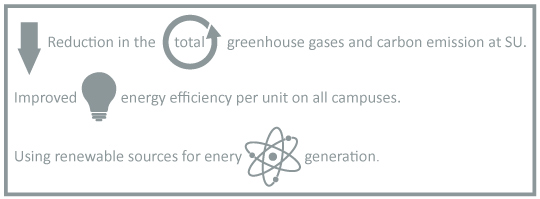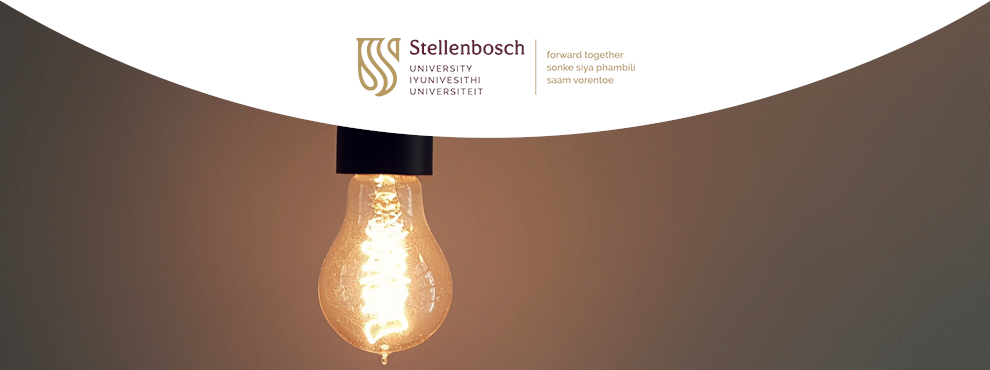On campus
Stellenbosch University uses various sources of energy (electricity, gas, diesel, PV panels), of which electricity is the major source. This source is the main contributor to our carbon footprint as it is generated from fossil fuels. SU is exploring other cleaner energy sources (renewable) and energy-efficient initiatives. Within this context, energy is one of the focus areas of SU's sustainability initiative and the university has many initiatives in place to save energy, which affect each staff member and student.
The following objectives have been identified for achievement by 2022:

Figure 1: Reduction in the total greenhouse gases and carbon emissions at SU. Reach Carbon Neutrality by 2030. Improved energy efficiency per unit on all campuses. Using renewable sources for energy generation.
Numerous initiatives have been implemented at SU to save energy and utilise renewable sources. Here are a few of them.
Light bulbs in buildings are replaced through energy-saving LED programmes on all four campuses.
Motion sensors that turn on lights only when there is movement are currently in the process of being implemented. These prevent lights from burning unnecessarily and therefore reduce energy consumption.
Energy use is measured by smart meters and modems in the various buildings on campus. The PowerWatch programme is used to identify any deviations and manage better utilisation of energy. Energy audits are performed at certain energy-intensive campus buildings to investigate the potential for savings.
Small and individual cooling/heating systems are replaced with centralised HVAC energy-saving systems.
New and refurbished buildings on all campuses use specially designed facades, including vegetation and screens, to make buildings more energy efficient by reducing the burden of external heat or cold in buildings.
Natural resources, such as trees, are planted in strategic areas to limit heat islands in the landscape and to fixate carbon.
Solar water heaters have been installed on a limited scale in certain areas. Heat pumps for the heating of water have already been installed at most residences.
Our building management system allows SU to automate and control most of the HVAC equipment on campus, therefore switching off when not in use.

